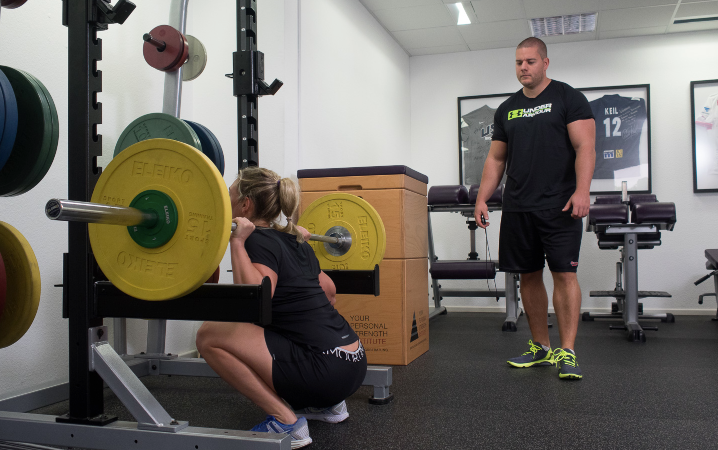
Why the Butt Wink is Beneficial….
butt for "butt", Wink, Engl. for "wink"
In recent years, I've often been asked about the butt wink. My answer is simple, the butt wink is to strength training what butter is to diet. He has an unjustified bad reputation….
What is the butt wink?
A butt wink is the folding of the pelvis in the bottom position of the squat. At first glance, this seems to increase the load on the lumbar spine (LWS). However, the opposite is the case.
The butt wink has 3 advantages:
1. Higher recruitment of the vastus medialis
By slightly folding down the pelvis in the lowest position of the squat, the range of motion when bending the knee is increased. This increases recruitment of the vastus medialis, the teardrop shaped portion of the quadriceps on the lower inner thigh. As more fibers are recruited into the vastus medialis, it becomes stronger. The stronger the vastus medialis becomes, the more stable the knee joint, since the vastus medialis is one of the two crucial muscles for stabilizing the knee joint.
2. Dynamic recruitment of the erector spinae
In most strength training exercises, the lumbar erector spinae is contracted isometrically in its stabilizing function. The butt wink, a slight flexing of the pelvis in the bottom position, provides a dynamic contraction of the lumbar erector spinae, an easy way to strengthen the erector spinae in this area. The strength of the lumbar erector spinae is critical to jumping and sprinting speed, particularly over the 0-10m so relevant in most team sports and martial arts.
3. Decreased compression of the lumbar spine
The compression of the lumbar spine during the squat is primarily determined by the horizontal distance between the center of mass (barbell) and the 5th lumbar vertebra (L5). This means the more upright someone is in the squat, the shorter the horizontal distance between the barbell and L5, the less compression there is in the lumbar spine. The butt wink, a slight folding of the pelvis in the lowest position, shortens the horizontal distance between the barbell and L5. And thus reduces the compression of the lumbar spine.
note in the margin
A butt wink is not just a butt wink. Folding down in the last 15cm of the range of motion is an advantage. Early folding indicates a deficit in ankle dorsiflexion, which needs to be corrected before LH squats are part of the training program. On the other hand, an upright upper body is crucial, which is most efficiently ensured by the elbow position - directly vertical under the barbell.
What if the butt wink comes on very early?
Optimizing poor squat execution due to an early butt wink, lack of depth and lowering of the upper body is primarily possible by improving flexibility of the gluteal complex and dorsiflexion of the ankle. In this case, the problem isn't the butt wink, but primarily the mobility of the ankle and hip.
Over the past few years, I've observed thousands of reps squatting live on YPSI and on video. A minimal butt wink is common even at elite level - such as Bulgarian weightlifter Stefan Botev, who weighed 95kg and squatted 380kg and front squatted 320kg. And does not lead to back problems in the short, medium or long term. The opposite is the case. An optimal squat with minimal butt wink is one of the best exercises to keep your knees and back healthy and fit for a long time….
Conclusion: A butt wink has its advantages. A full squat with a small butt wink is EVER preferable to a half squat with no butt wink….
Image: Ju Jitsu Weltmeierstin and YPSI athlete Romy Korn in a YPSI squat – with a minimal butt wink….
